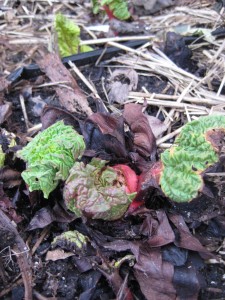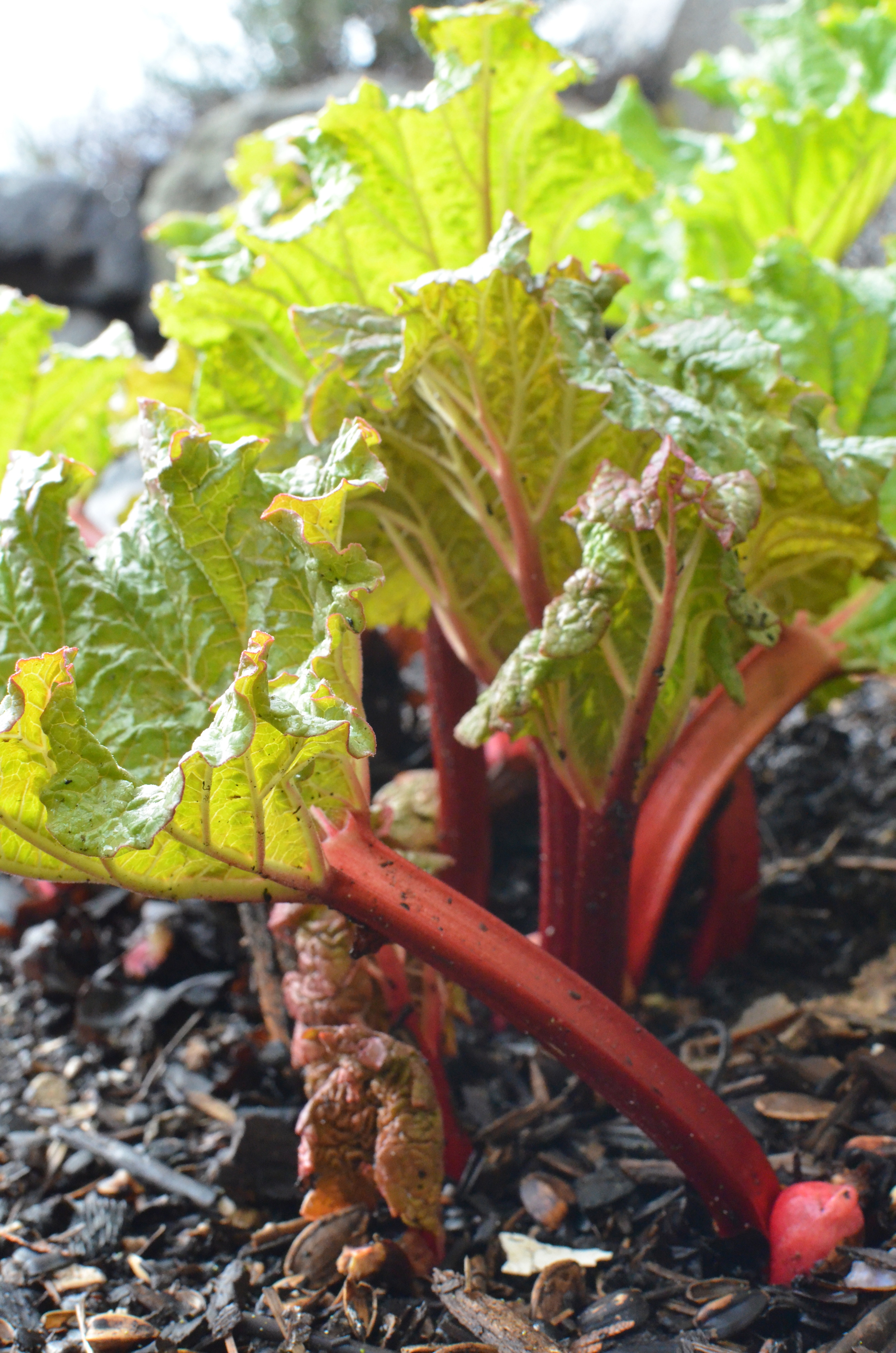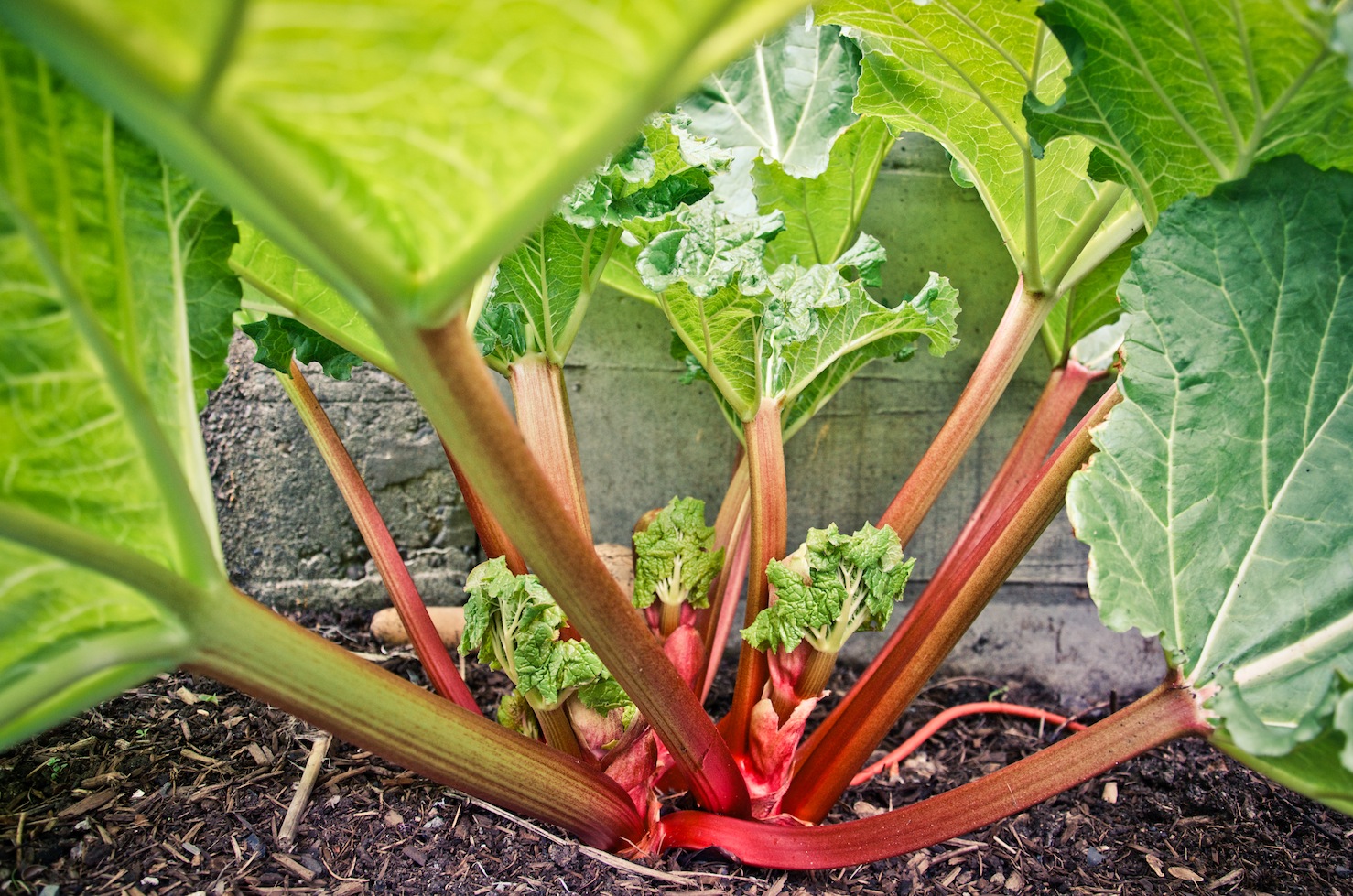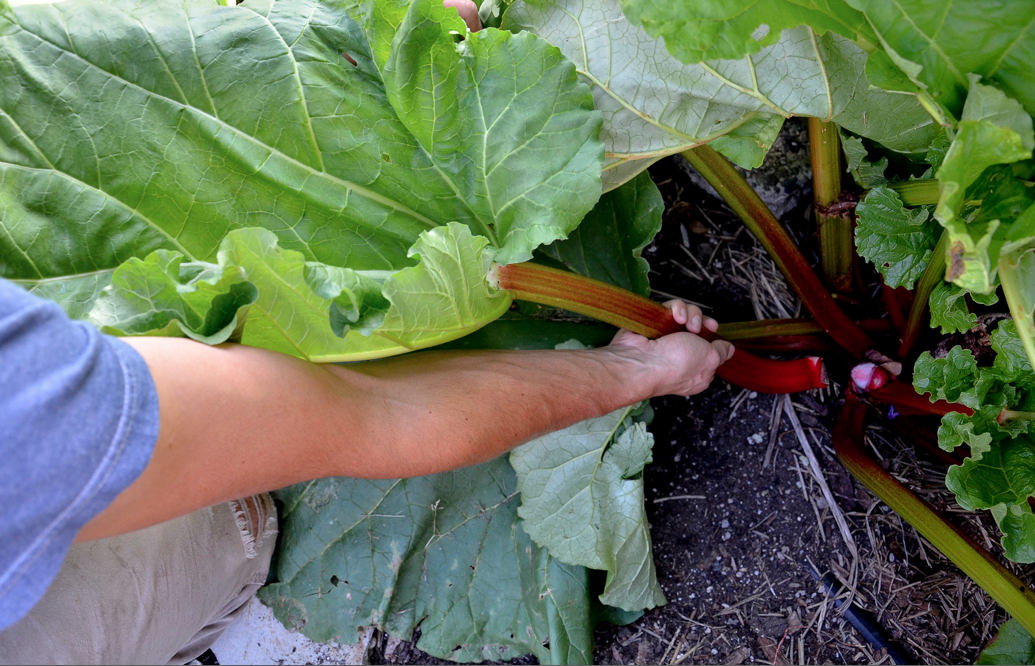Horticulturally rhubarb ( Rheum rhabarbarum) is a vegetable, but it is often used more like a fruit. It has a relatively sour taste which makes it well suited to mix with honey or sweet fruits such as strawberries.
Rhubarb is a hardy perennial from Asia and has long been used as a food and medicine in Chinese cultures. It has large, almost jurassic-sized green leaves on bright red or green stalks. The large leaves create great visual structure in a landscape, but only the stalk are eaten, as the leaves contain high concentrations of oxalic acid, which is toxic to humans.
Rhubarb is one of the easiest plants to grow and varieties can be found that thrive in almost any climate. A friend of mine lives in Jackson, Wy where the typical growing season is around 120 days long, and even she has a 30 year old rhubarb plant in her yard which she affectionately calls “Old Monster.” Typically, after getting a rhubarb plant established, it requires almost no care at all moving forward (however, additional care will improve your harvest). Rhubarb is not an invasive plant, but it is hardy enough that it can take several attempts to remove it once it is established.
We suggest growing rhubarb from rhizomes, so if you want to add rhubarb to your garden we suggest buying a root cutting at your local nursery or finding a friend who has an established plant and digging up a chunk of the root. The benefit to purchasing a plant from a nursery is that you will be able to choose your variety, and there are many to choose from!
Once you have located your rhubarb rhizome, plant it with the crown up. Add one cup of balanced fertilizer when planting. Water the area until the soil is saturated. If you are planting more than one rhubarb rhizome, space plants 3-4 feet apart. Plant rhubarb anytime in the spring or fall!
Rhubarb is relatively tolerant of acidic soils, but thrives in slightly alkaline soils with the pH of 6.2-6.9. This is the same pH your annual vegetable should be so you can plant rhubarb on the edge of an annual bed. Rhubarb also appreciates fertilization. We have noticed that applying a balanced fertilizer in the spring and 2-3 inches of compost around your rhubarb each fall is sufficient.
Eventually your rhubarb plant will begin to spread out, as the rhizomes you planted begin to expand (this will take a few years). For many people, this is considered a good thing, because more rhubarb rhizomes means more rhubarb stalks! If the plant does end up growing larger than you want, simply dig around the base of the plant and chop back sections of the root mass. Just be sure to remove the dug up sections from your garden (give them to a friend!) so they don’t become new rhubarb plants!
Harvest rhubarb stalks when leaves start to fill out in the spring. To harvest, simply grab a stalk near the base and pull it from the plant. The stalk should come off easily. Remember to cut off the leaf! After several weeks of spring harvesting, the stems may lose much of their flavor and become less tender. This is a good time to stop harvesting for the season.





